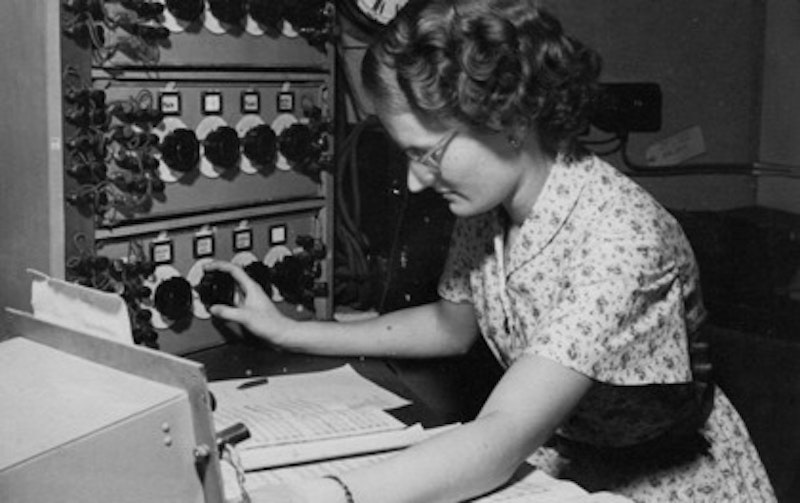Anyway, I'm on a digital/analogue barn-burning bender today. This time I'm going back, waaay back, to the early days, to one Daphne Oram from the BBC who invented Oramics, the process of converting pictures to sound. Baller.
Check out the Guardian's photo slideshow, the Wikipedia entry and the above track, "Pulse Persephone" (terrifying, wonderful) off the two-disc Oramics.
Analogue purists argue that, among other things, digital music is over-compressed; it's too loud; and it loses the heart and soul of the original music. Analogue audio—tapes, vinyl, vacuum tubes—are closer, more faithful to the original source.
I can't speak with much technical expertise on these issues, but as an avid guitar player and recovering gear addict, I've had the tube-vs.-solid-state debate a thousand times over. Solid-state amplifiers are, simply, digital amps. The sounds from your guitar are run through several circuit boards before you hear them. Tube amps—amps that use vacuum tubes—are generally thought to be the best reproducers of an audio signal (well, specifically an insturment's signal). Why? Your guitar's signal is powered by the tubes, which physically react to your instrument's power, variance and nuance in real time. Solid-state amps model those variations. But tubes require maintenance and break easily; digital is far more adpatable in terms of effects. What's the best choice? I prefer that old blues stuff (and vinyl), and so tend to stick with the tubes, but the Bjork's of the world tend to go with digital.

